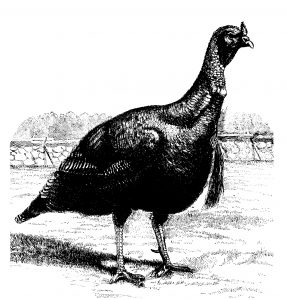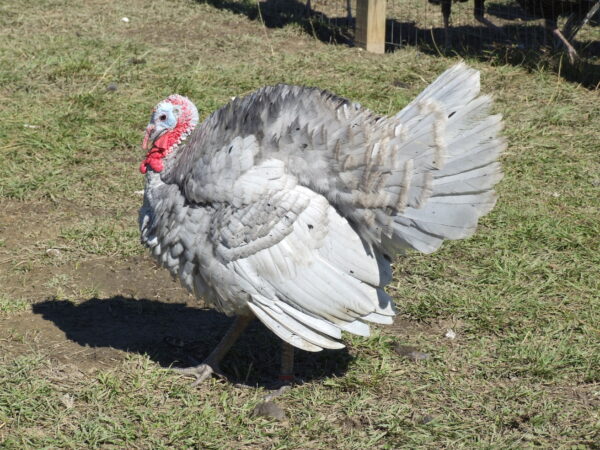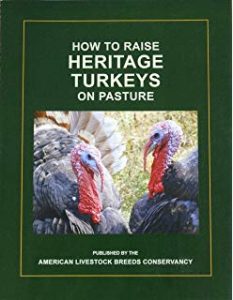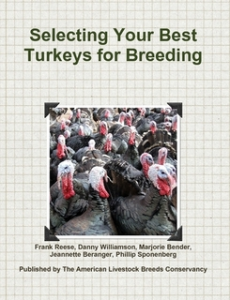
Breed Facts
Status:
Watch
Use:
Meat, Exhibition
Egg Color:
Pale cream to medium brown with spotting
Egg Size:
Large
Weight:
Male Young – 23 lbs. Mature – up to 33 lbs.
Female Young – 14 lbs. Mature – 18 lbs.
Temperament:
Highly dependent on socialization and selection by breeder; some select for aggressive, others docile
Temperament:
Not good fliers; ideal slate color challenging to breed.
SLATE TURKEY
There is little documentation on the early origins of the Slate variety of turkeys. Slate coloration is a true mutation, and earliest reports seem to date to around the time of publication of the first Standard of Perfection. More frequently mentioned around 1904-1906, Slate turkeys were still considered a rare novelty. Slate turkeys never approached the popularity of other varieties, and there is no record that they were exclusively raised for meat production. It seems likely that they have been primarily an exhibition variety throughout most of their history.
Two different genetic mutations can produce the slate (blue) color, one dominant and one recessive. Most common today is the color dilution caused by the D gene, which can be found on a Black (BB) or Bronze (bb) background. Different combinations of D (dilution) gene with the B gene produces the slate color in slightly different shades, some of which do not meet the APA standard for exhibition Slate turkeys. Recessive slate is thought to be very rare. It also appears on a black or bronze background, and the underlying color will determine whether the color is more grey or blue.
The Slate was accepted by the American Poultry Association Standard of Perfection in 1874.
The Slate variety should be dark steel grey over the entire body. A good Slate tom should have black flecking. Unlike the specking, which is tiny dots of black, flecking can be one-inch, two-inch, or three-inch spots of black. This is perfectly legitimate, and a turkey should never be put down or disqualified for that. There should not be one solid black feather or solid white feather anywhere on a Slate turkey.
The most desirable color is absent of red edging or bars in their feathers. The head, throat, and wattles are red-to-bluish-white. Their beak is horn color, their eyes are brown, and their beard is black. The shanks and toes are pink.
The Standard weight for a young tom is 23 lbs. and for a mature tom, up to 33lbs. Young hens average 14 lbs. and mature hens up to 18 lbs. Although seldom raised exclusively as table birds their size and finish are similar to that of Black turkeys, making them a very suitable choice for the homestead or small farm. Hens lay cream or light-brown, spotted eggs in the spring/summer but are not known as prolific layers.
The Slate is popular for exhibition, and the variety is known for their placid temperament. Some males may be territorial, but they are generally gentle, especially if they are well socialized to people when young. They make good pets as they are a pretty, friendly, easy-to-raise bird. They are not good fliers. Their temperament and appearance would make them attractive for farm visitors and agritourism.
Did you know:
Livestock Conservancy Program staff have more than 175 cumulative years of heritage breed experience. We hold Ph.D.s in veterinary medicine, genetics, and biology. We are the most experienced livestock conservation team in the world.

Breed Facts
Status:
Watch
Use:
Meat
Egg Color:
Pale cream to medium brown with spotting
Egg Size:
Large
Market Weight:
14 -23 lbs
Temperament:
Highly dependent on selection by breeder, Some select for aggressive, others docile
You may be interested in…




